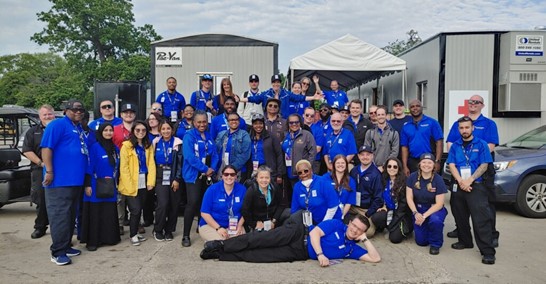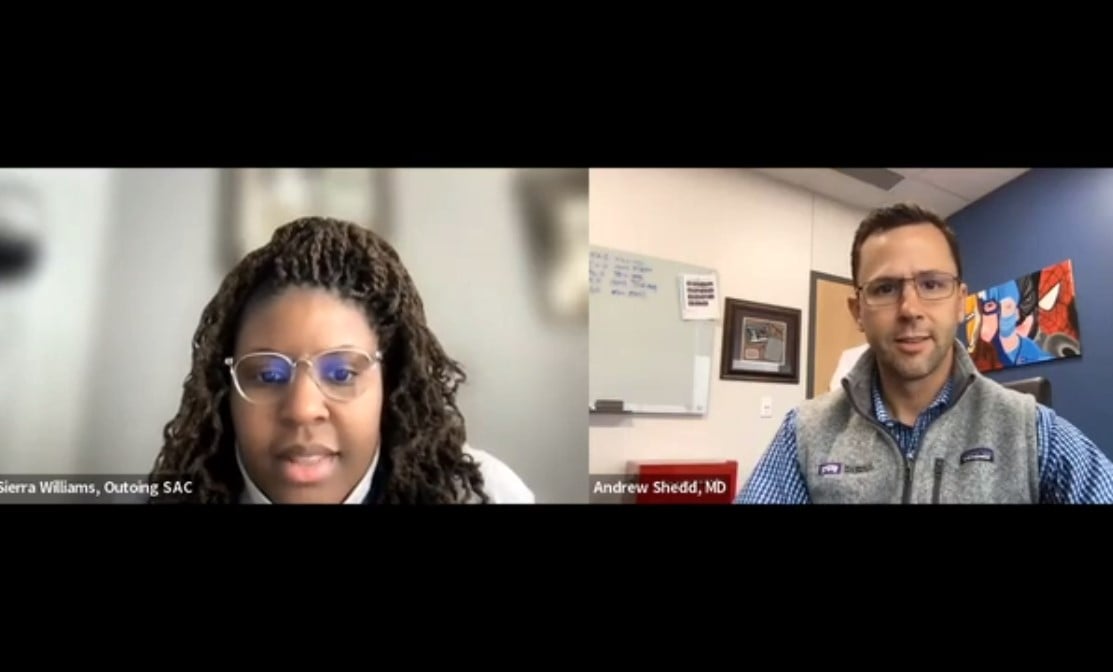Start your Engines: Motorsports Medicine
Revelle Gappy, MS-III, Oakland University William Beaumont School of Medicine
EMRA MSC Great Lakes Regional Representative, 2022-23
Sahar Rammaha, OMS-IV, Michigan State University College of Osteopathic Medicine
EMRA MSC Midwest Coordinator, 2021-23
Jacques Lowe, MS-IV, Carle Illinois College of Medicine
EMRA MSC Great Plains Regional Representative, 2022-23
“It’s lights out, and away we go!” says the racing operator. Motorsports racing events are held across the country and on-screen for millions of viewers annually. Popular racing series include Formula 1, IndyCar, NASCAR, and IMSA among others. The popular Netflix show, Drive to Survive, has ignited racing viewers in recent years and revamped interest in motorsports. Along with motorsports comes the unique field of motorsport medicine. The concept of motorsports medicine is often associated with driver crashes. For example, Romain Grosjean, a former Haas Formula 1 driver, crashed at the Bahrain Grand Prix in 2020 where his car hit the barrier at 119mph and subsequently caught on fire1. Grosjean was trapped in the cockpit for 27 seconds before emerging from the flames. He sustained minor injuries including burns to his hands and a sprained left ankle but eventually made a full recovery.
In addition to caring for the drivers and pit crew members, motorsports medicine also cares for the thousands of spectators and workers that attend the racing event over several days. As a new field, motorsports medicine includes facets of EMS, sports medicine, as well as event planning for mass gatherings that emphasizes a strategic plan to ensure the safety of all participants. Designated leaders, such as an acting physician medical director, members of the racing organization itself, and key personnel from nearby EMS agencies and hospital systems, come together to coordinate safety plans months before and during the racing weekend. On the ground at the event will include a central medical unit, various first aid stations, and several types of interdisciplinary health professionals to maintain coverage.
On the island of Belle Isle in Detroit, Michigan, the Chevrolet Detroit IndyCar Grand Prix was held this past weekend. We had the chance to speak with Chelsea Meixner, RN, Chief Nursing Director who detailed for us the inner workings of the medical team.
What kind of logistical planning is involved in your position?
Meixner: “I am responsible for finding the volunteers for the medical team, First Aid Station 1, the MERV (medical emergency rescue vehicle) units, Pit In, Pit Out crew, the roving medical teams, and the medical central unit.”
What are some of the common medications available at the event?
Meixner: “Some of the medications in our trailer are Tylenol, Motrin, Claritin, Benadryl, Zofran, Lidocaine for lacerations repairs, Albuterol for asthma treatments, and other allergy treatments. Also eye and ear treatments, and antibiotics.”
Could you talk about the advanced medical capabilities in the medical central unit?
Meixner: “For our trauma trailer, which is going to be the trailer for any drivers or any serious patrons with medical conditions, we are fully set up as an emergency room would be. We have a crash cart with all capabilities and a ZOLL monitor that can cardiovert or defibrillate a patient. We can start IVs, give IV fluids, and start IV medications. We have Rocuronium and Succinylcholine if we need to intubate. We have x-ray and ultrasound on-site with an x-ray technician available to shoot those x-rays. We also have all cardiac drugs in order to run an ACLS code.”

Pictured: The 2022 Chevrolet Detroit Grand Prix Medical Team (Permission for publication granted by Meixner)
To accommodate the rising interest and need for training in motorsports medicine, Indiana University School of Medicine created a motorsports medicine fellowship2. It is a one-year program designed to prepare physicians to manage initial responses to track-side accidents, partake in safety preventative strategies, assess track design, and also learn about the extended delivery of healthcare for mass gatherings.
A recent article from WRTV Indianapolis featured Julia Vaizer, MD, the first physician to graduate from the fellowship who also serves as the Assistant Medical Director for IMSA and IndyCar racing. Dr.Vaizer recently oversaw one of the most iconic events in motorsports racing, the Indy500 Grand Prix, which had approximately 300,000 people in attendance. Dr.Vaizer states that ”the best part of the job, is the actual patient care that we value very much.” Dr.Vaizer will continue to act as a pioneer in motorsports medicine and train future motorsports medicine physicians3.
References:
1https://motorsports.nbcsports.com/2021/03/06/romain-grosjean-crash-report-f1-bahrain/
2https://medicine.iu.edu/emergency-medicine/education/fellowship/motorsports-medicine/curriculum
Related Content







